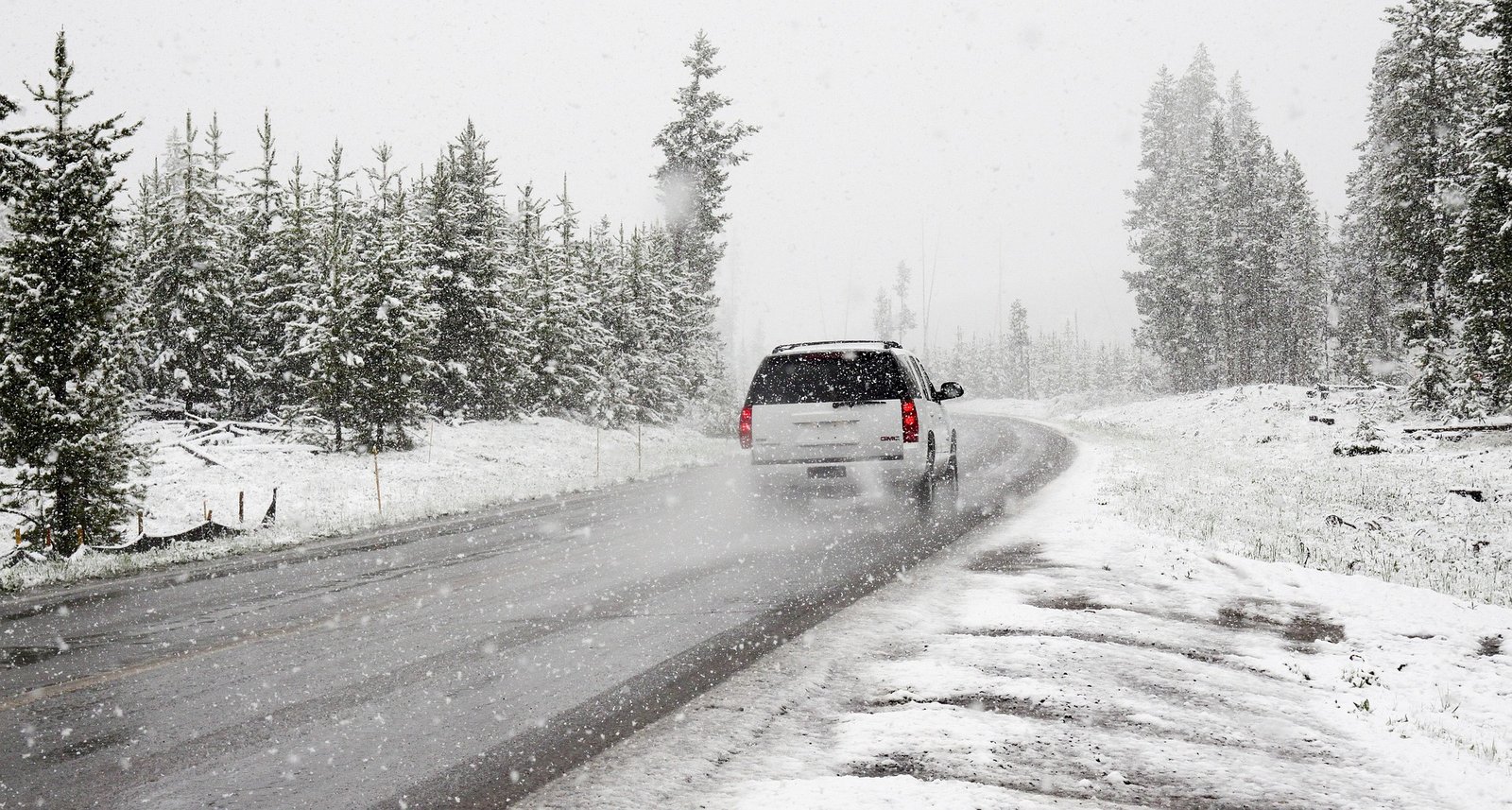Winter driving brings unique challenges and hazards, from icy roads to sudden snowstorms. Preparing your vehicle for the cold season isn’t just about maintenance—it’s also about ensuring safety and preparedness in case of emergencies. Here’s a complete guide to getting your vehicle winter-ready.
Inspect and Winterize Your Vehicle
Tires
- Switch to Winter Tires: All-season tires may not provide adequate traction in snowy or icy conditions. Winter tires are designed to stay pliable in colder temperatures, improving grip.
- Check Tire Pressure: Tire pressure drops as temperatures decrease, so check and adjust it regularly. Properly inflated tires help with traction and handling.
- Consider Chains or Studded Tires: If you live in a mountainous or extremely snowy region, tire chains or studded tires may be necessary.
Battery
- Cold temperatures can severely impact battery performance, so have your battery tested to ensure it has enough charge.
- Check Connections: Ensure the battery terminals are free of corrosion, clean, and tightly connected.
- Battery Replacement: If your battery is older than three years or shows signs of weakness, consider replacing it before winter.
Fluids
- Antifreeze: Check your antifreeze level and make sure the ratio of antifreeze to water is correct (typically 50:50). Antifreeze helps prevent your engine from freezing in low temperatures.
- Windshield Washer Fluid: Use a washer fluid rated for cold temperatures to prevent freezing. Keep an extra jug in your car.
- Oil Change: Winter weather may call for a lower-viscosity oil. Consult your vehicle’s manual or mechanic to see if a different oil grade is recommended for colder temperatures.
Wiper Blades
- Visibility is critical in winter. Install winter wiper blades, designed to prevent ice build-up, and replace any worn-out blades.
Brakes
- Check the brake system and ensure everything is in good working condition. Winter roads demand quick and reliable stopping power.
Create a Winter Emergency Kit
In case you become stranded or delayed, having a winter emergency kit can be a lifesaver. Here’s what to include:
Essentials for Staying Warm
- Blankets and/or Sleeping Bag: Wool blankets or a thermal sleeping bag provide insulation.
- Warm Clothing: Extra hats, gloves, socks, and scarves can help keep you warm.
- Safety and Communication Gear: Flashlight and Extra Batteries: In case you need to signal for help or find something in the dark.
- Battery-Powered Phone Charger: To keep your phone charged for emergencies.
Tools and Equipment
- Shovel: A collapsible shovel can help you dig out of snow if your vehicle gets stuck.
- Traction Aids: Sand, cat litter, or traction mats can help tires gain traction on icy or snowy surfaces.
- Ice Scraper and Snow Brush: For keeping windows and mirrors clear of ice and snow.
- Tow Strap: A tow strap or rope can help another vehicle assist you if you’re stuck.
Food and Water
- Non-Perishable Snacks: High-energy snacks like protein bars, dried fruit, and nuts can sustain you during a wait.
- Water Bottles: Keep water in the car, but consider using insulated containers to prevent freezing.
Plan Your Winter Travel
Check the Weather Forecast
- Always check the weather before heading out. Snowstorms, freezing rain, and extreme cold can make driving dangerous.
Map Out Rest Stops
- Knowing where to find safe places to pull over can be critical in bad weather.
Keep Your Tank Full
- A full gas tank minimizes condensation, reducing the risk of fuel line freeze-up. It also ensures you have plenty of fuel to run the car periodically if you’re stuck.
Winter Driving Tips and Techniques
Drive Smoothly
- Winter driving is all about smooth, gradual movements. Accelerate and brake slowly to avoid sliding. Leave plenty of space between you and the vehicle ahead.
Beware of Black Ice
- Black ice is a thin layer of ice on the road that’s nearly invisible. Slow down and avoid sudden turns or braking if you suspect black ice.
Stay Calm if You Get Stuck
- If your vehicle gets stuck, avoid spinning your tires at high speeds. Instead, clear snow away from the tires and use traction aids like sand or kitty litter. If the situation becomes serious, call for help.
Keep Up with Regular Maintenance
- Even in winter, your vehicle requires regular maintenance. Keep up with scheduled oil changes, brake inspections, and fluid checks. Winter roads can be rough on vehicles, so regular maintenance will help prevent breakdowns and ensure your vehicle runs smoothly.
Conclusion
- Preparing your vehicle for winter driving and emergencies is an investment in your safety and peace of mind. By winterizing your car, assembling an emergency kit, and being proactive about weather and driving conditions, you’ll be ready to tackle winter roads with confidence.










